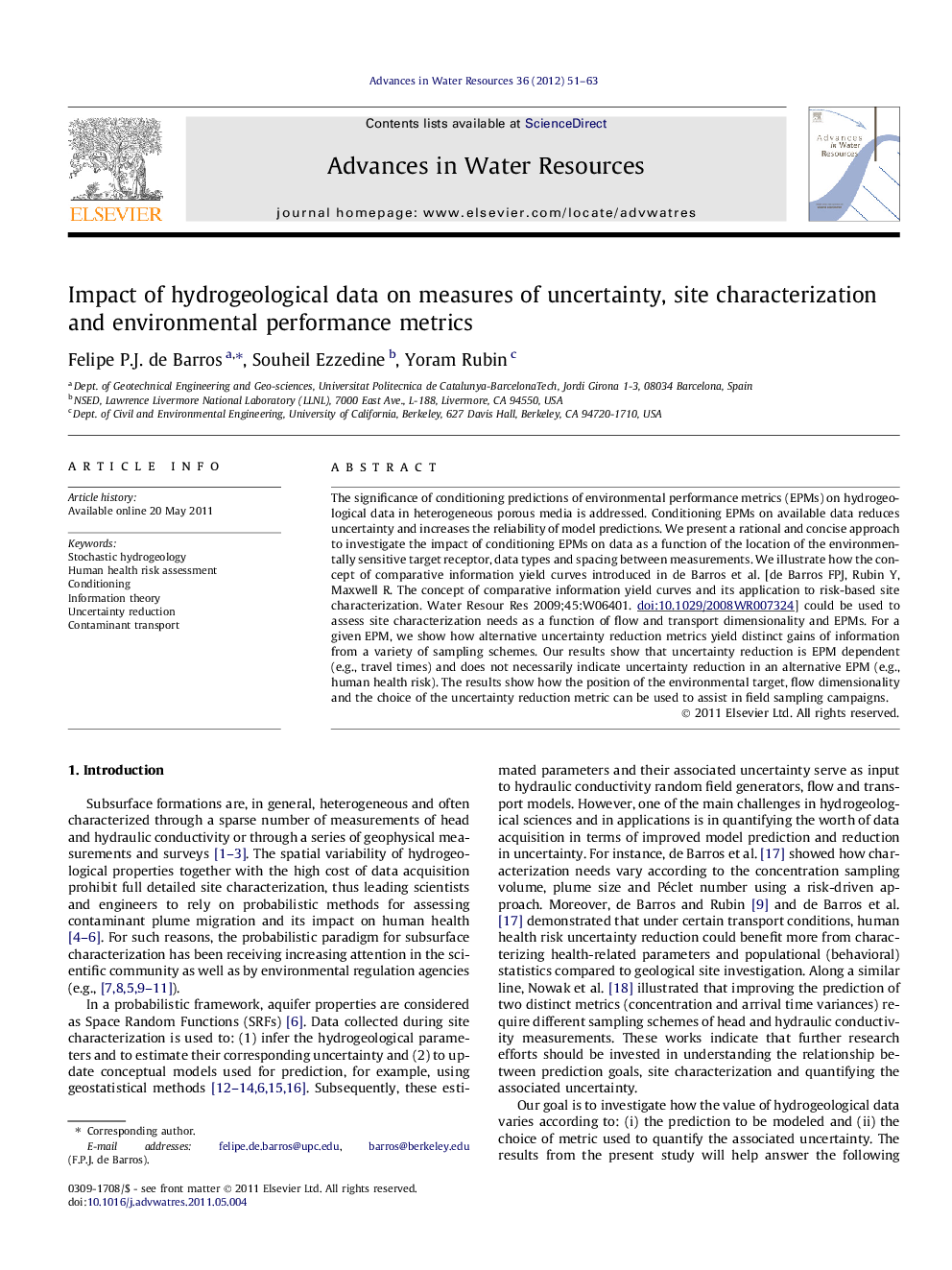| Article ID | Journal | Published Year | Pages | File Type |
|---|---|---|---|---|
| 4526026 | Advances in Water Resources | 2012 | 13 Pages |
The significance of conditioning predictions of environmental performance metrics (EPMs) on hydrogeological data in heterogeneous porous media is addressed. Conditioning EPMs on available data reduces uncertainty and increases the reliability of model predictions. We present a rational and concise approach to investigate the impact of conditioning EPMs on data as a function of the location of the environmentally sensitive target receptor, data types and spacing between measurements. We illustrate how the concept of comparative information yield curves introduced in de Barros et al. [de Barros FPJ, Rubin Y, Maxwell R. The concept of comparative information yield curves and its application to risk-based site characterization. Water Resour Res 2009;45:W06401. http://dx.doi.org/10.1029/2008WR007324] could be used to assess site characterization needs as a function of flow and transport dimensionality and EPMs. For a given EPM, we show how alternative uncertainty reduction metrics yield distinct gains of information from a variety of sampling schemes. Our results show that uncertainty reduction is EPM dependent (e.g., travel times) and does not necessarily indicate uncertainty reduction in an alternative EPM (e.g., human health risk). The results show how the position of the environmental target, flow dimensionality and the choice of the uncertainty reduction metric can be used to assist in field sampling campaigns.
► Significance of conditioning environmental performance metrics (EPM) on data. ► Gain of information is dependent on EPM and measures of uncertainty. ► Physical setup and uncertainty reduction metric can guide field sampling.
